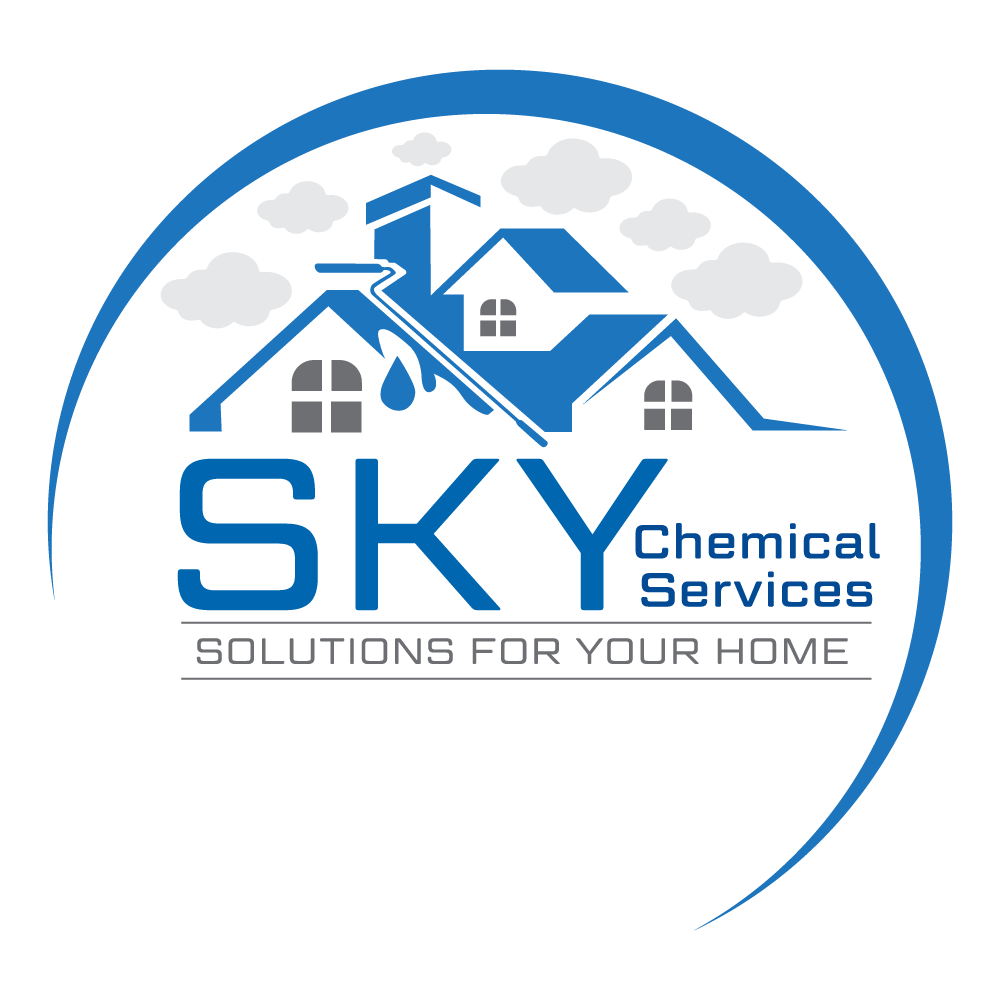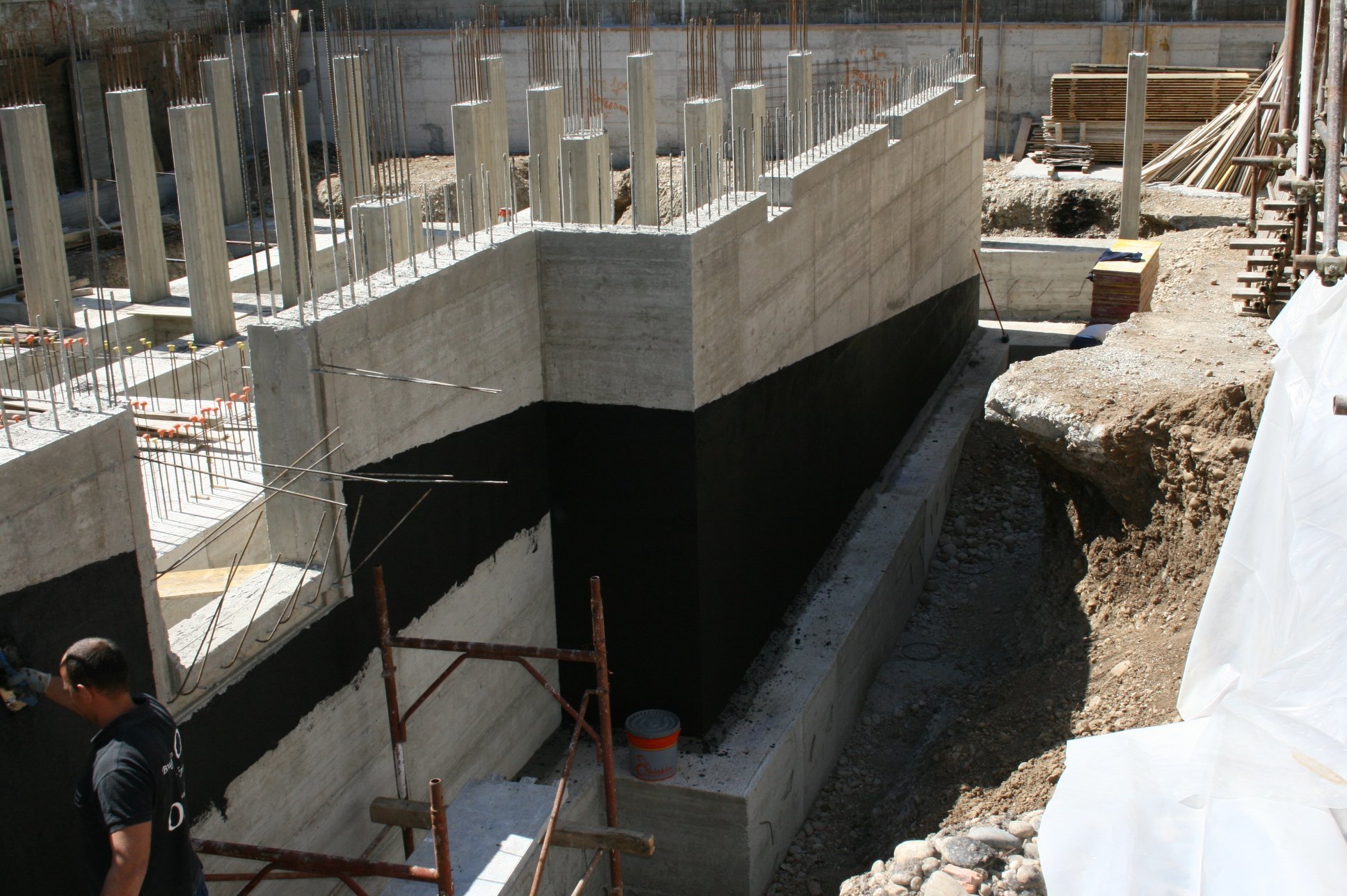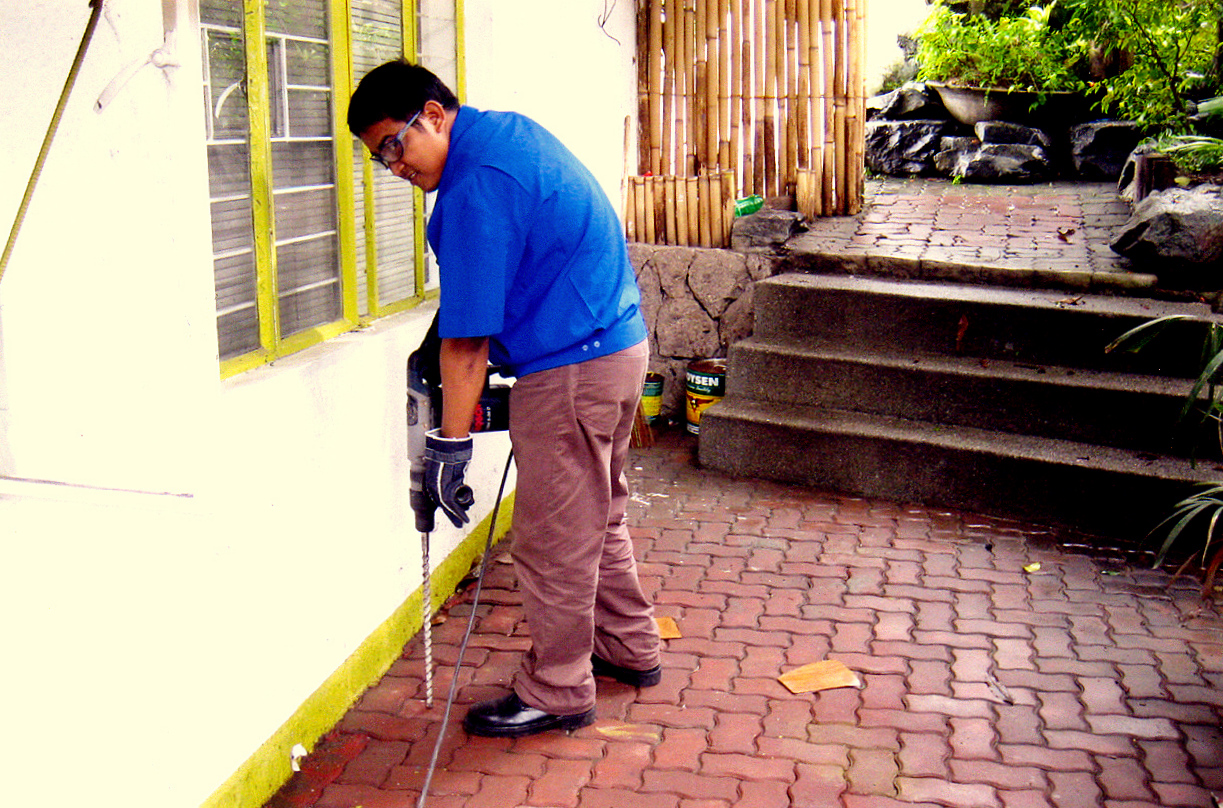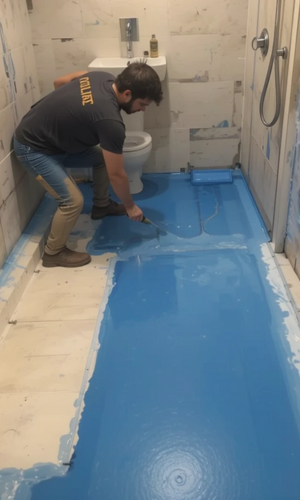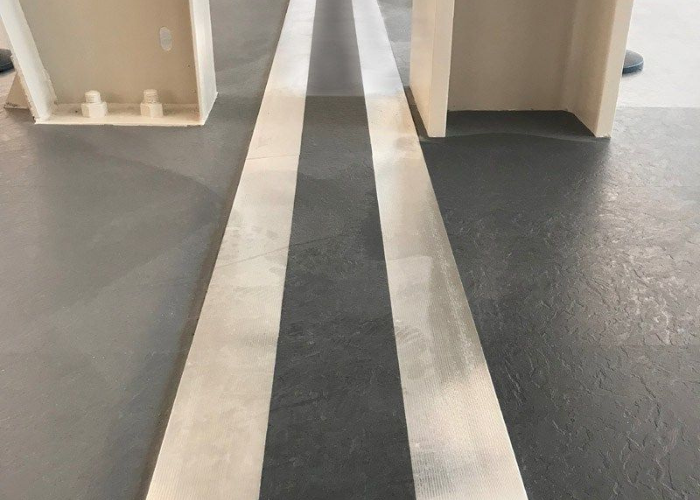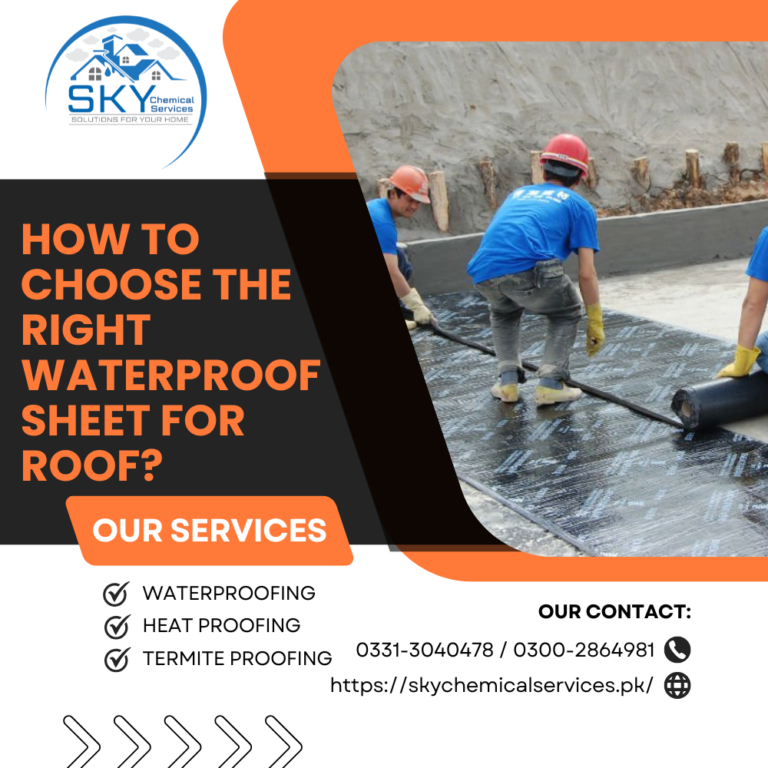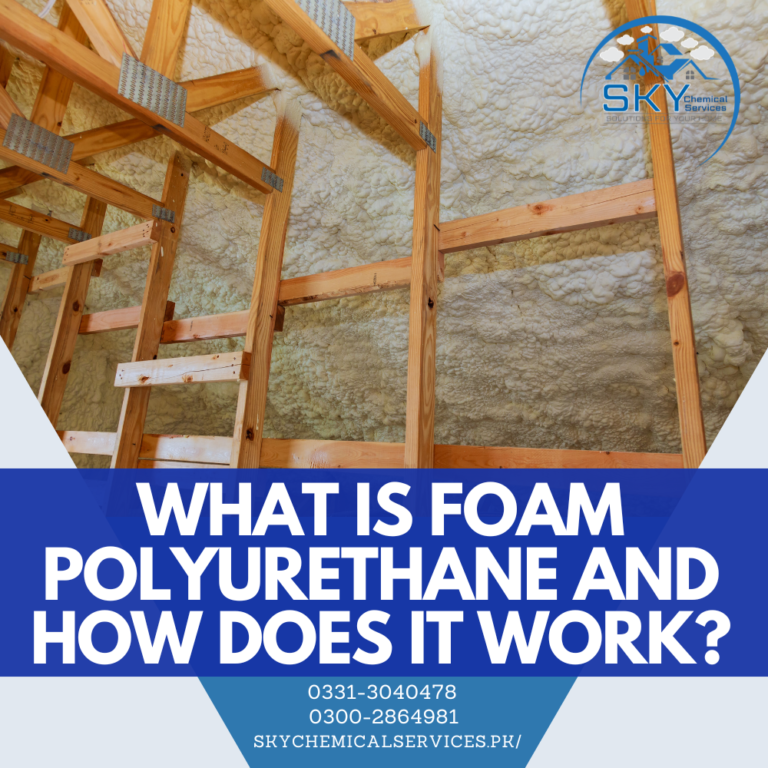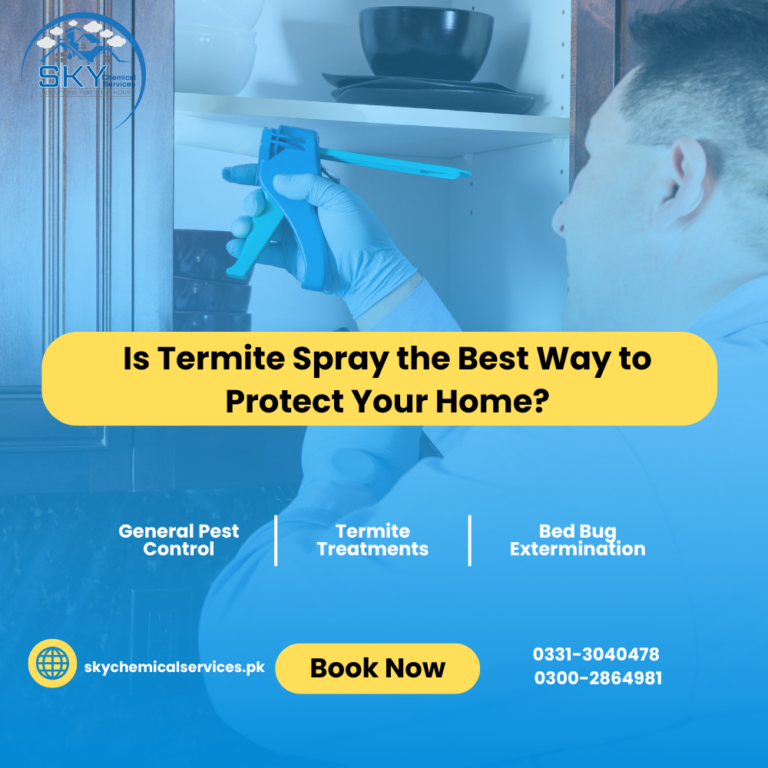Karachi’s weather is unforgiving. We get scorching heat, strong sun,...
Read MoreBest chemical treatment which is aimed to provide relief on multiple fronts. With our waterproofing chemicals and through the application by experts, we will ensure that all leakage and seepage are a thing of the pat. Our portfolio also includes heat proofing chemicals to secure your roof from extreme temperatures.
Sky chemical Services provides the next-gen solution that not just redeems high temperatures during the summer season, but it also protects from heatwaves. Introducing Polyurethane insulation services that come in foam spray tends to get applied over any form of roof, whether it's flat or irregular. You can also apply PU form spray over your walls.
Are you fed up from the pest infestation at your home? Get yourself a professional fumigation service that comes with all the latest means and methods to ensure to wipe off every form of insects, pests, and rodents for good. Our pesticide chemicals are completely safe and secure for domestic use, but it doesn’t lower it for the extermination of these pests, because it isn’t.
About Us
Sky Chemical Services provides chemical-based treatment in the areas of waterproofing, heat proofing, polyurethane insulation, and fumigation services. Through our services, we make sure that our customers don’t require to look elsewhere about their chemical needs. With over 11 years to experience, Sky Chemical Services has gained momentous popularity as one of the emerging brands in the domain of next-gen chemical procurement and treatment. The Sky Chemical Services understands that with rising temperature over our atmosphere, and with un-scheduled raining in Pakistan, its time to provide services that comes under the category of next-gen solution. No maintenance. No trouble. Only protection.

Excellence
By making our standard of excellence, we provide nothing short from excellent service, from chemical application to chemical procurement.

Professionals
There’s no substitute for being a professional service provider and one by-product of being professional is to provide more what customer needs.

Commitment
Every job that people entrusted on us is followed with commitment and devotion of unparalleled proportions for solution.

Satisfaction
No matter what our business model is, and how our execution strategy is being followed for customer satisfaction into consideration.

Cost-effective
Our chemicals and application are always based on competitive rates. We believe that business should be based on return-based only.

Quality
Products and services that we provide will be of the best quality without incurring a heavy cost of the product on the customers.
OUR SERVICE
What we do
Waterproofing
Secure your rooftops, tanks, foundation and much more from leakage and seepage
Read MoreHeat Proofing
High temperature over your roof can be suppressed through elastomeric coatings.
Read MorePU Spray Foam
Polyurethane insulation through foam spray works provides protection from heat
Read MoreTermite Proofing
Sky Chemical Services ensures that no termite ever enter into your home ever again.
Read MoreWhy Choose Us?
Years of Experience
Projects completed
Very Happy Customers
saved on electricity
saved on renovation
saved on Furniture repairs (termite)
our story
History About Sky Chemical Services
Sky Chemical Services has a team of experts with over 11 years of experience in the field of chemical-based treatment. Our main base has remained a next-gen chemical solution that includes waterproofing and heat proofing solution. With thousands of happy customers, we increased our service-based and now provide Polyurethane foam spray service and just recently providing fumigation service with technicians of over 15 years of experience.
Roof Waterproofing Process by Sky Chemical Services
Heat & Waterproofing Treatment
For additional heat resistance, two to three extra coats are applied using a blend of heat-reflective and waterproofing chemicals. This dual-action treatment provides both thermal insulation and superior waterproofing performance.
Base Coat Primer Application
A high-performance BCS 2000 two-component primer admixture is applied in three uniform coats across the entire roof. This enhances the durability of the concrete and ensures long-lasting waterproofing protection.
Surface Preparation & Crack Treatment
The roof surface is thoroughly cleaned to remove dust and debris. Visible cracks are treated using a joint sealant, reinforced with fabric bandaging, and securely filled to prevent water penetration.
Sky Chemical Services – Key Benefits
- Expert Waterproofing Solutions
- Advanced Heat Proofing Technology
- Tailored Treatments
- Durable & Cost-Effective
- Professional Team
- Environmentally Conscious
- Free Site Inspection & Consultation
Sky Chemical Services uses industry-leading techniques and high-quality materials to deliver reliable, long-lasting waterproofing solutions. Whether it’s residential homes, commercial complexes, or large-scale industrial roofing, each project is handled with care and precision. The team focuses on protecting your property from water leakage, seepage, and structural damage that often comes with Karachi’s harsh weather conditions.
By combining advanced waterproofing chemicals with skilled application methods, Sky Chemical Services ensures durability and performance for years to come. From terraces and basements to bathrooms and water tanks, their tailored approach addresses the unique needs of each surface. With a strong reputation for professionalism and customer satisfaction, they provide peace of mind that your property is not only safeguarded but also preserved for the future.
In regions with extreme heat, roof temperatures can rise to uncomfortable levels, directly affecting the indoor climate and making living spaces difficult to manage without heavy reliance on air conditioning. Sky Chemical Services addresses this problem with optional heat-proofing treatments designed to reflect sunlight and minimize heat absorption. By applying specialized coatings, the roof surface temperature is significantly reduced, which in turn lowers the overall heat transfer into the building. This not only creates a cooler and more comfortable indoor environment but also helps cut down on electricity bills by reducing the need for continuous air conditioning. Over time, these treatments improve energy efficiency, extend the lifespan of the roof by protecting it from thermal stress, and provide long-term savings for homeowners, businesses, and industrial facilities alike.
No two buildings are alike, and each one faces its own set of challenges when it comes to water seepage, leakage, and heat exposure. That’s why Sky Chemical Services begins every project with a thorough inspection, carefully assessing the structure before any work begins. Factors such as the roof’s age, existing condition, construction material, slope, and even surrounding environmental conditions are taken into account. In Karachi’s climate, where heavy rains and scorching summers put extra pressure on buildings, these details matter.
By analyzing all these elements, the team is able to design a customized waterproofing and heat-proofing system that addresses the exact needs of the property. This tailored approach ensures maximum effectiveness, better durability, and longer-lasting results compared to generic, one-size-fits-all methods. Whether it’s a residential home, a multi-story commercial building, or a large industrial site, Sky Chemical Services adapts its solutions to deliver the best possible protection and performance for each client.
The materials and techniques used by Sky Chemical Services are chosen not only for their immediate effectiveness but also for their long-term durability. Every chemical and coating applied is tested to withstand Karachi’s challenging weather, from heavy monsoon rains to months of intense heat. By focusing on quality and resilience, Sky Chemical ensures that each solution provides reliable protection year after year.
These treatments don’t just stop leakage or control heat in the short run—they also help preserve the structure of your building, extending the overall lifespan of your roof and reducing the risk of costly damage in the future. With fewer repairs required, property owners save significantly on maintenance costs and avoid the hassle of frequent touch-ups or temporary fixes. For homeowners, businesses, and industrial facilities alike, this makes waterproofing and heat-proofing with Sky Chemical Services a smart, long-term investment that enhances comfort, safety, and property value.
Every technician at Sky Chemical Services is highly trained in the latest waterproofing and heat-proofing technologies, as well as in modern safety protocols. Continuous training and hands-on experience allow the team to stay updated with industry innovations, ensuring that every project benefits from proven techniques and advanced materials. Beyond technical skill, the crew is also punctual, professional, and detail-oriented, respecting both your property and your time.
From the initial inspection to the final application, Sky Chemical’s team works with precision and care, making sure that every stage of the process is completed to the highest standards. Their goal is not only to solve existing leakage or heat problems but also to prevent future issues through long-lasting solutions. Just as importantly, they strive to minimize disruption to your daily routine, completing projects efficiently while maintaining strict safety standards. This customer-focused approach has earned Sky Chemical Services a strong reputation in Karachi as a trusted partner for residential, commercial, and industrial waterproofing.
The products used by Sky Chemical Services are carefully formulated to be eco-friendly and completely safe for both indoor and outdoor environments. Unlike many conventional waterproofing chemicals that release strong fumes or contain harsh additives, these solutions are designed to be non-toxic, low-odor, and environmentally responsible. This means they can be applied in living spaces, workplaces, and industrial areas without posing health risks to families, employees, or customers.
In addition to ensuring safety, all products comply with modern environmental standards and sustainability guidelines. By using advanced, eco-conscious formulations, Sky Chemical Services not only protects your property but also contributes to a healthier planet. These chemicals are engineered to provide long-lasting waterproofing and heat-proofing while minimizing environmental impact. Whether it’s for a small residential bathroom or a large commercial roof, you get peace of mind knowing that the solutions safeguard both your building and the environment at the same time.
Sky Chemical Services offers a complimentary site inspection to thoroughly assess the current condition of your roof or any other area requiring waterproofing or heat-proofing. During this visit, their experienced team carefully examines the surface for cracks, seepage points, drainage issues, and signs of structural stress that could lead to long-term damage if left untreated. This detailed inspection allows them to gain a clear understanding of the challenges your property is facing.
Most importantly, Sky Chemical Services emphasizes honesty and trust—there are no hidden charges or surprise costs. Everything is explained upfront, giving customers peace of mind and confidence in the investment they are making. This customer-first approach has made the company a preferred choice for property owners in Karachi seeking long-lasting, reliable waterproofing and heat-proofing solutions.
Our Waterproofing Services
Open Time 9AM - 7PM
Contact:
0331-3040478
Want to find more about us and what services we provide. Contact us Today
- Email
[email protected] - Address
Office No. 105, 1st Floor, Unity Corner, Adbul Hassan Isphani Road, Karachi
What Our Customers Have To Say

Sohail Khan
I’m very happy with the work untaken by Sky Chemical Services for my House.

Babar Mehmood
Sky Chemical Services shows a high level of professionalism in their work. I’m very satisfied with them.

Ejaz ul Haq
Never I’ve been so impressed with a chemical service than Sky Chemical Services before. A job well done.

Ibrahim JangaManager Ocean company
Sky Chemical Services are people of commitment, sincerity, and above a job well done at the end.
OUR Blog
Latest Articles
What Is Foam Polyurethane and How Does It Work?
Polyurethane foam, often simply called foam polyurethane, is one of...
Read MoreIs Termite Spray the Best Way to Protect Your Home?
Termites are often called the “silent destroyers” for good reason....
Read More